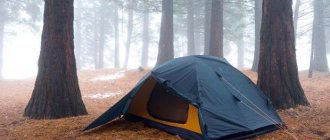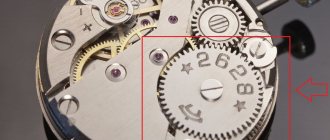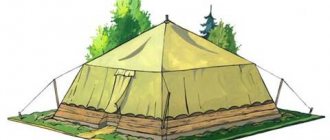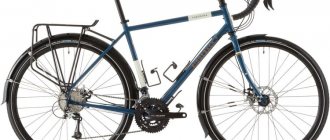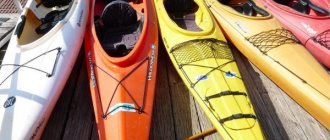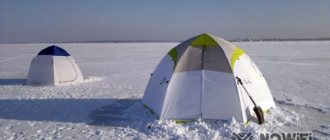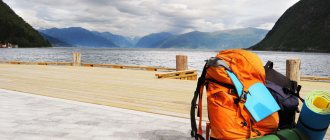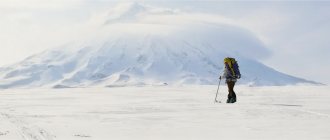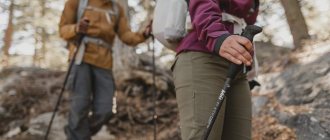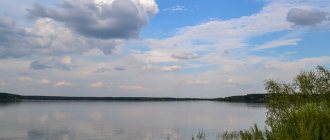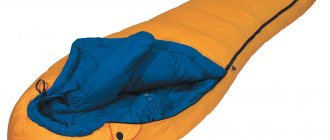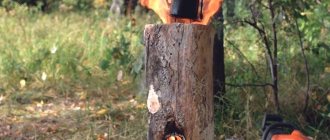About the appointment
We will analyze here only the choice of a tourist (trekking) tent. These are tents used by travelers, tourists, cyclists, hikers, fishermen, hunters and other mobile people. Such tents can be carried around with you for many days, they can be quickly set up, and quickly dismantled. In fact, the entire article “How to choose a tourist tent” is dedicated to them.
Number of seats
Classic 2-person camping tent. A single-seater can already be perceived as extreme, and a 3-seater as a camping one. But this is, of course, a rough judgment, it all depends on the situation. You will have to decide for yourself how many places to choose a tent based on your needs. For example, I have two types of tents in terms of capacity for different situations, but the two-person tent is the main one and the most popular.
The approximate dimensions of various sleeping places for comfort are shown in my drawing below.
Some thoughts and observations from experience
- A two-person tent is the most versatile option. When you decide to choose a backpacking tent, remember that a double tent can be used for solo travel, or for traveling with two people, or even with three people. If desired, it can accommodate more people. A living example is our overnight stay on Mount Sinai in Egypt, when four adults of average build spent the night in a cheap two-person Chinese tent. Uncomfortable, but warm.
- It's good when you're independent when traveling. Even if my travel companion takes a two-person tent, I will also tend to take my own tent so that I can be completely independent.
- A single tent will always find a place to install it: a 1x2 m site is easier to find than a 2x2 m site.
- The number of seats in a tent is assigned based on the comfort of living in it, but in reality three people can sleep in a 2-person tent, and four people can sleep in a 3-person tent. In principle, it is possible to spend the night with more people, but this is based on the principle “just to have a break somehow.”
Weight
When you think about how to choose a camping tent, be sure to pay attention to its weight. This is a very important characteristic for those who will carry their things themselves and at the same time walk far and long, less critical for cyclists and motorists. The less weight, with the same other characteristics, the more expensive the tent. So motorists are very lucky in this regard: they can save money reasonably. In general, if the weight of a tent is more than 3 kg, its place is in the trunk of a car, and not in the backpack of a traveler, who is best looking for something closer to 2 kg. But for two or three, the tent’s weight of 3-5 kg seems to be scattered among everyone.
Although situations may be different. For example, I have to carry a three-person tent weighing 3.2 kg, because there is no budget lighter alternative, and a two-person tent for a family of four (2 adults + 2 children) is too small.
The optimal weights of budget and high-quality tents are approximately distributed as follows:
It is unlikely that you will find a budget lighter option without sacrificing quality. But motorists, as I said, are lucky: their weight is not critical, which expands their options. They can choose a camping tent that is heavier, but with decent performance, made from heavy, cheap but reliable materials.
Bottom of the tent.
The bottom of the tent must be strong, wear-resistant, and have good water resistance, because often the tent is installed on snow, sand, sharp stones, and the task of the bottom of the tent is to withstand such tests with dignity.
When choosing a tent, pay attention to the water resistance of the bottom, it should be at least 4000 mm. To make the bottom, it is best to use nylon fabrics with Oxford weave, the weave density is at least 210T and the thread thickness is not thinner than 210D.
It happens that the bottom is made of reinforced polyethylene (PE, tarpauling). Good, non-wetting material, but very heavy.
Number of layers of a camping tent
Single-layer tent - a tent with one layer of material, which is an awning. Ventilation occurs through a small window at the top of the tent, covered with a cape.
- Pros: cost, weight, the tent is quickly set up and removed.
- Disadvantages: more condensation accumulates; among representatives of such tents there is a lot of low-quality Chinese consumer goods.
There are times when choosing such a tent is justified.
A double-layer tent consists of an inner tent (first layer) and a flysheet (second layer). When installing the tent, a gap is formed between these two layers, which ensures ventilation and condensation flows away from the living area. The inner tent allows air to pass through (ventilated), and the awning protects residents from rain and wind.
The inner tent can be installed separately (without an awning). We sometimes do this when it’s hot during the day so that the tent can be ventilated, and we spend the night without an awning when it’s stuffy.
- Pros: less condensation.
- Cons: more expensive, heavier, the tent takes a little longer to set up and put away.
As you understand, all these problems with two layers are mostly due to condensation. When the tent is not ventilated enough, drops of water accumulate on the walls. If there are a lot of them, then it is very uncomfortable - damp. And in winter, frost forms in the tent. If you choose a camping tent with two layers, this will minimize such undesirable phenomena.
Types of tourist tents
If you have already decided on the basic parameters, choosing the right camping tent will then depend on its type.
For the convenience of tourists, several types of tents have been identified, easily distinguishable from each other by their external and quality features. Each type has its own advantages and features, useful for one buyer and useless for another. In order to make the right choice, it is better to look at this issue more carefully.
Dome tent
It is considered the most multifunctional type of camping tent. The name comes from its shape - the design is similar to a hemisphere, which ideally protects from rain and wind. The dome is very stable and easily performs its functions without stretching, which can be a big problem for a novice tourist.
The dome tent is considered the most multi-functional type of backpacking tent.
The dome is suitable for both short hikes and long forays. Due to its simplicity and convenience, this tent is recommended for all beginners. Its only drawback is that they are usually small. It is not easy to organize space for several people in a tent of such an uneconomical shape.
Half-barrel tent
These are large tents, even if they are designed for one person. The half barrels have the shape of a log, are very roomy and are designed for long hikes. The main volume serves not only the people inside, but also helps keep things intact. A regular dome tent or tent will not be able to accommodate that much extra luggage.
The half-barrel tent has the shape of a log, is very roomy and is designed for long hikes.
Due to its non-streamlined shape, the half-barrel may not withstand strong winds - you must take this into account and not take risks if the wind accelerates significantly at night, as often happens in the off-season.
Tent
Usually taken on hikes with light hiking conditions. It is distinguished by its large size; among camping tents for 3-4 people, most models are of the tent type. This is due to the fact that this form allows you to save as much space as possible.
The marquee tent is large in size.
A properly placed tent ideally protects those inside from moisture - rainwater and dew do not accumulate on top, but quickly flow down. Recommended for large groups on recreational trips. It is better not to place it on difficult terrain.
Tent-house
These are also called classic. Everyone has seen a tent like this at least once - a sharp “ceiling” and sloping sides, mounted on guy wires. This is a good option for those who are not seriously involved in hiking and do not plan, only going out with a group once a year for barbecue or recreational fishing.
“Houses” are always in the low price segment, often single-layer, designed for one or two people. It’s not a pity to spoil this one on your first hiking trip, lose it or get dirty. For novice tourists it will be suitable as a teaching aid.
House tents are always in the low price segment, often single-layer, designed for one or two people.
This type is not intended for use on difficult or rocky soil, only for plains. Otherwise, if the tent is not reinforced from below, comfort will be significantly reduced.
Awning (second layer of the tent)
I recommend that you take the water resistance of the awning seriously. Actually, this is its main purpose. Simply put: one awning will allow water to pass through during a rainstorm, while the other will not get wet. Numerically, this is expressed in the maximum height of the water column (mm w.c.) that the awning material can withstand.
If they now ask me how to choose a tourist tent and correctly take into account the numerical value of the water resistance of the awning, then I generally recommend choosing tents with an indicator of at least 3000 mm H.S. My personal tent with these characteristics survived a gusty wind and a half-hour downpour; the rest of the rain was normal, and it coped with them too. No complaints yet.
Start from this value - 3000 mm H.S. For myself, I decided this: if the tent needs to be used in places where rain is rare, then you can underestimate the indicator, and if there is a likelihood of serious rain with strong winds, then it’s not a sin to play it safe and put at least 5000 mm in the tent in the awning.
Among materials for awnings, polyester is the leader, surpassing nylon in its characteristics. There is a suspicious attitude towards awnings made of membrane fabric. This fabric is two in one: it “breathes” and at the same time has water-repellent properties. Many people believe that over time the fabric becomes dirty and loses these advantages.
The awning fabric can be impregnated with polyurethane (in simple terms, rubber). Fabric with such impregnation is labeled as PU.
Tent components
Entrance hall/porch
All good car camps and family tents will have a large veranda. And camping tents also usually have a small porch area. Gear is stored in this space to free up space in the sleeping area. It is also a good place to cook and eat food.
Outdoor tent/rainfly
A rainfly is a layer of tough, waterproof fabric that is placed on top of the inner tent (with a gap between the two). Its main task is to prevent rain. But it will also be windproof.
Inner tent
They sit under the rainfly and are either attached to posts or attached to the rainfly fabric. Inner tents are not waterproof but create a sleeping area that is separate from the tent's porch.
Pole hub
Some tents have pole configurations that connect at one central location. They are either permanently attached (and foldable) to the central mount or can be detached from it entirely.
Slings
Ropes attached to the ground ensure that the tents can withstand windy conditions. They also create tension on the tent's outer fabric to prevent rainwater from pooling in sagging areas. The slings should have an adjustable mechanism that allows them to be tightened and loosened as needed.
Pegs/stakes
Tent pegs are used to keep tents securely attached to the ground. Usually they are metal.
Gear loft
Some tents make the most of the extra space in the ceiling by having a small “shelf” for storing small items of gear.
Pockets for storage
Most tents have storage pockets that are built into the inner tent. They help keep your tent tidy and are useful for storing personal items.
Ground sheet
This is the part of the tent where you walk and lie down. It is usually made of waterproof fabric which is very durable, although lightweight tents often have thin ground sheets. Inner tents have built-in ground sheets, while rain flies often have a removable ground sheet or no ground sheet at all.
Track
Tents that do not have a durable or waterproof ground cover may be pitched in a footprint. This is essentially a ground sheet that is designed for a specific tent and is used as additional material.
Outlet
All tents have ventilation holes. Usually in the rain they fly in the same way as in the inner tent. They are necessary to maintain air flow through the tent, which in turn helps manage internal condensation.
Screen door
Screen doors are essential when camping in areas where bugs and insects are a problem. They are also very lightweight and are often used in camping tents where low weight is important.
Tent divider
Larger tents that sleep 3 or more people sometimes have a removable partition in the inner tent. These are great if you need a little privacy from your tent mates, or if you have kids who need to go to bed earlier than you. Dividers are usually made of lightweight fabric and are simply attached to the ceiling of the inner tent.
Internal serrated hooks
The barbed hooks are located in various places inside both the inner tent and the rainfly. They are useful for hanging a washing line between them to dry clothes. Or they can be used to fasten lanterns and light up in the ceiling.
Back door ties
All tents have door ties. They are usually a simple lever and hinge that holds the rolled door in place and does not interfere with holding the door open.
Pole attachment points
Most tents have a point where the end of the pole attaches to either the outer or inner tent depending on the design of the tent. These systems vary, but once in place they are very reliable.
Storm flaps
Exterior tent doors with zippers usually have a strip of fabric that folds over the zipper to prevent rain (and wind) from getting through the zipper teeth. Many storm flaps are secured at their base with Velcro to keep them in place.
Pole clamp
These are clips or hooks that are used to attach poles to an inner or outer tent. They vary from tent to tent and should be easy to attach but very secure once in place.
Bottom
Here again, it is important to pay attention to water resistance. The characteristic is the same - in millimeters of water column. Decent water resistance of the bottom starts from 3000 mm w.st. Now I have tents with an indicator of 5000 mm H.S. – I seem to have re-mortgaged. I didn’t try to place them specifically in a puddle (although I can check in the future), but they were placed on wet soil after rain. Everything is dry.
The strength of the material is another important thing to pay attention to. The load on the floor is always high. Firstly, we walk on the floor ourselves, and secondly, it is not always possible to prepare a site for a tent: remove branches, cones, sharp stones that can pierce the bottom.
How to choose a camping tent based on the bottom material? Budget tents use reinforced polyethylene, which increases their weight; more expensive and lighter tents use nylon and polyester.
I currently have tents with polyester bottoms. Visually, the bottom is very thin, and it seems that if you come across some strong twig, it is about to pierce the bottom. But so far there have been no punctures, maybe because I always try to prepare the site for the tent as carefully as possible, or maybe because the material is sufficiently strong.
There used to be a cheap Chinese tent with a bottom made of reinforced polyethylene. Really strong material, but loses a lot in weight.
By purpose
The most important thing that you should initially decide on is the purpose of the tent, i.e. conditions under which it will be used. The following types of tents are distinguished by use:
